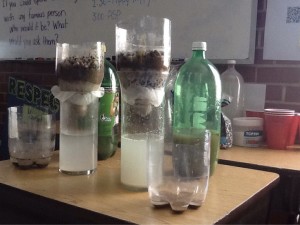Creating family traditions for the students in my class is an exciting and important activity during the holidays. For the second year we have studied and learned about the history of the Macy’s Thanksgiving parade with the books “Balloons Over Broadway” by Melissa Sweet and “Milly and the Macy’s Parade” by Shana Corey and Brett Helquist. Through our class lessons and discussions I help students discover that traditions can be as simple as gathering together and watching the parade on TV.
In keeping with our Maker classroom culture, students spent the morning designing and building a collage of the Macy’s Parade. Later, we enjoyed watching the 2013 parade together and playing parade bingo.
As I watch the parade with my family this morning, I hope my students are enjoying it with their families as well.





